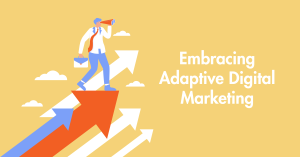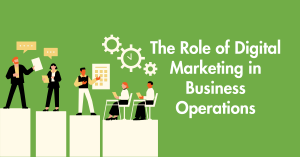Recently updated on August 26th, 2025 at 11:28 pm
Crafting effective digital marketing strategies often means navigating a sea of jargon. To help you chart your course, here’s a concise glossary of key terms:
A
A/B Testing
Also known as split testing, it is essentially a method of comparing two versions of a digital asset (like a webpage, email, or ad) to determine which one performs better.
Always-On Marketing
The continuous, consistent promotion of your brand across various channels to keep it top of mind for your audience. It helps to ensure your brand stays visible, building trust and recognition over time.
Acquisition Marketing
A strategy focused on promoting products or services to new audiences to drive conversions. It targets prospects during the interest or consideration phase with tailored tactics to bring them into the customer’s journey.
B
Brand:
Brand Equity
The perception consumers have of a brand. This perception is influenced not just by the product, but by the overall experience associated with the brand.
Brand Salience
The degree to which consumers think of or notice your brand at the moment of purchase, not just in general awareness.
C
Customer Relationship Management (CRM)
A comprehensive plan that utilises data and technology to manage and improve interactions with your audience.
Cost of Acquisition (CAC)
The total cost a business spends to acquire a new customer, including marketing, sales, and overhead. A vital metric to assess marketing efficiency and ROI.
E
Evergreen Content
Content that remains useful, informative, and valuable long after it’s created. It isn’t tied to fleeting trends or seasonal spikes; rather, it’s designed to endure, offering long-term value to both businesses and consumers.
G
Go-to-Market (GTM) Strategy
The plan for launching a product or service to market, outlining how you’ll reach your target audience with positioning, channels, pricing, and messaging.
H
Hypertargeting
Advanced targeting that uses detailed data (demographics, behaviours, interests, purchase intent) to deliver highly personalised messages to micro-segments of your audience.
I
Inbound Marketing
A strategy that attracts customers by creating valuable content and experiences tailored to them. Instead of pushing messages, inbound pulls audiences in through blogs and social media.
L
Lead Generation
The process of attracting and capturing interest in your product or service to build a pipeline of potential customers. Often involves landing pages, gated content, and contact forms.
M
Marketing Flywheel
A model that replaces the funnel by focusing on customer experience to drive continuous growth.
Marketing Technology (MarTech)
The suite of marketing technologies (used for automation, analytics, and scheduling) that enables smarter execution and insights.
Mass Marketing
Targets the broadest audience possible with a single message.
Moment of Truth (MOT)
Key moments when customers form impressions:
Zero MOT (ZMOT)
Research phase before purchase (e.g. online searches).
First MOT (FMOT)
Initial encounter with the product (seconds of decision).
Second MOT (SMOT)
Product experience post-purchase.
Third MOT (TMOT)
Post-use advocacy and feedback.
N
Niche Marketing
Focuses on specific segments with tailored messaging.
O
Organic:
Visitors or reach gained naturally without paid promotion.
Organic Social
Reach and engagement generated by posts without boosting or sponsoring.
Organic Traffic (Website)
Users arriving via search engines (SEO-driven).
Outbound Marketing
Traditional marketing that pushes messages to a broad audience, often interrupting them (e.g. TV ads, cold emails, billboards, and telemarketing). Outbound is less targeted than inbound, but it is useful for reaching a broader audience.
P
Paid Media
Advertising that requires a budget to reach audiences. Examples include Google Ads, sponsored social posts, display ads, and influencer collaborations.
Positioning
A brand’s spot in the consumer’s mind. Strategic positioning differentiates a product or service (whether in function, symbolism, or experience) so it resonates uniquely among competitors.
R
Retargeting
A digital advertising technique that serves ads to people who have previously interacted with your website, app, or content.
S
Sentiment & Sentiment Analysis
Sentiment
The emotional attitude (positive, negative, or neutral) people have toward a brand.
Sentiment analysis
Using language processing to detect emotional cues in customer interactions (social media, reviews), helping to tailor responsive strategies.
U
Unique Selling Proposition (USP)
A statement that spells out what makes your product or service distinct from competitors — whether it’s innovation, price, or value.
V
Value Proposition
A clear statement that explains the unique benefit a product or service provides, how it solves a customer’s problem or meets their need, and why it’s better than alternatives.
Voice of the Customer (VoC)
A collection of customer expectations, preferences, and aversions, often gathered via interviews, surveys, social media monitoring, online reviews, customer service interactions or focus groups.
Understanding and mastering these terms ensures better strategic thinking. Knowing how these terms work together in your marketing strategy helps you make informed, confident decisions.


